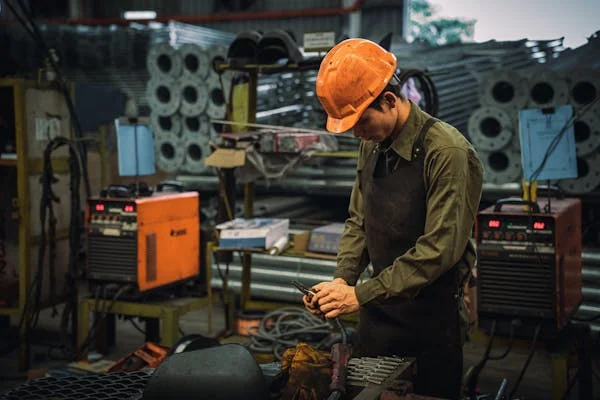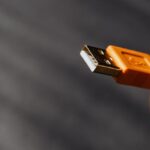Design technology systems that fire-protection engineers use is a critical part of building design and construction. As urbanization increases and technological advances change building construction, fire protection engineering has evolved significantly. Fire-protection engineers are essential in ensuring the safety of buildings, structures, and the people within them. Using various design technologies, fire-protection engineers can implement systems that prevent fires, contain their spread, and help safeguard lives and property.
In this article, we will explore the design technologies fire protection engineers use to design effective fire safety systems. This will include fire detection and suppression systems, emergency evacuation systems, and fire-resistant materials. The goal is to highlight key components that help engineers to provide safer environments for the built space.
What is Fire Protection Engineering
Design technology systems that fire-protection engineers use is a specialized field of engineering dedicated to preventing, controlling, and mitigating fire hazards within structures. It combines knowledge of fire behavior with engineering principles to design and implement effective fire safety solutions. These solutions may include fire detection systems, automatic sprinkler systems, fire-resistant building materials, compartmentalization, emergency communication systems, and fire suppression technologies. The role of a fire-protection engineer is to integrate these components seamlessly into buildings to minimize the risk of fire and to mitigate the damage should a fire occur.
The design and planning of fire protection systems require a deep understanding of building codes, fire safety regulations, advanced fire dynamics, alongside expertise in technology systems.
Key Fire Protection Technology Systems
Fire-protection engineers use various technology systems to develop fire safety solutions that meet regulatory requirements, optimize fire suppression capabilities, and reduce the risk to life and property. Below, we will discuss some of the most essential systems fire protection engineers utilize today.
Fire Detection Systems
The first step in protecting a structure from fire is ensuring it can be detected as early as possible. Fire detection systems detect smoke, heat, and gases that indicate the presence of fire or combustion. These systems help alert occupants and authorities to take action before the situation escalates.
Smoke Detection Systems
- Ionization Smoke Detectors: These detectors detect the presence of smoke particles in the air by ionizing the air inside the detector chamber. They are particularly effective for detecting fast-burning, flaming fires.
- Photoelectric Smoke Detectors: These detectors work by sensing light scattering from smoke particles. They are more sensitive to smoldering or slow-burning fires, making them ideal for areas with poor airflow or potential for hidden fires.
- Combination Smoke Detectors: Some modern detectors combine ionization and photoelectric sensors, providing dual coverage and increasing the likelihood of early fire detection.
Heat Detectors
Heat detectors are used to identify unusual increases in temperature or rapid temperature rises. These systems are typically installed in areas where smoke detection may be impractical, such as in kitchens or high-ceilinged environments. There are two main types of heat detectors:
- Fixed Temperature Detectors: Activated when the temperature exceeds a preset threshold, often set to 135°F (57°C).
- Rate-of-Rise Heat Detectors: These sensors detect rapid temperature increases. This type of heat detector is proper for detecting early-stage fires before the temperature rises to dangerous levels.
Flame Detectors
Detectors are highly specialized devices that sense a fire’s ultraviolet (UV) or infrared (IR) radiation. Flame detectors are essential when the combustion process is intense, such as in power plants or aircraft hangars.
Fire Suppression Systems
Once a fire has been detected, a reliable fire suppression system is needed to control or extinguish the flames quickly. Many fire suppression systems are tailored to specific building types and fire risks.
Sprinkler Systems
Fire sprinklers are one of the most widely used fire suppression technologies. Sprinkler systems automatically release water to control or extinguish a fire when a heat-sensitive element in the sprinkler head is activated. The different types of sprinkler systems include:
- Wet Pipe Sprinkler Systems: These are the most common, where the piping is always filled with water released when a sprinkler head activates.
- Dry Pipe Sprinkler Systems: In areas with cold climates, dry systems are used where water is only released when a fire triggers the sprinkler head. This prevents water from freezing in the pipes.
- Pre-Action Sprinkler Systems: These are a combination of both wet and dry systems. The pipes are pressurized with air, and once an alarm is triggered, a secondary detection system confirms the need to release the water.
Sprinkler systems help minimize fire damage and ensure that fires are suppressed or extinguished in the earliest stages of combustion.
Gaseous Fire Suppression Systems
Some environments, such as data centers, laboratories, and computer rooms, require a fire suppression system that does not risk water damage. In these instances, engineers design gaseous fire suppression systems to quickly extinguish flames without harming delicate equipment. These systems utilize gases such as:
- FM-200: A clean agent that removes heat from the environment, suppressing the fire without damaging electronic devices.
- Inergen: Another environmentally friendly fire suppression system using a mixture of nitrogen, argon, and carbon dioxide.
- Carbon Dioxide (CO2): When used in small spaces, CO2 extinguishes fires by displacing oxygen and suppressing combustion.
Gaseous fire suppression systems are typically installed where water-based systems would be damaging to valuable equipment or sensitive materials.
Foam Fire Suppression Systems
Foam suppression systems are widely used in industries dealing with flammable liquids, such as chemical plants and airports. These systems create a foam layer that suffocates the fire, cutting off the oxygen needed for combustion. They are typically divided into:
- Aqueous Film-Forming Foam (AFFF): This foam forms a thin layer over the surface of burning liquids, preventing vapors from escaping.
- Protein-Based Foam: Typically used for larger fires involving hydrocarbons like petroleum, it can combat high-temperature fires more remarkably.
Passive Fire Protection Systems
While active fire suppression systems are crucial, passive fire protection focuses on preventing the spread of fire and its products through physical barriers and fire-resistant materials.
Fire-Resistant Materials
Fire-resistant materials play a fundamental role in minimizing structural damage during a fire. These materials include concrete, fire-rated gypsum, mineral-based boards, steel coated with fire-resistant compounds, and intumescent paints. The key benefit of fire-resistant materials is their ability to withstand high temperatures and help compartmentalize the fire to contain it in one building area.
- Intumescent Coatings: These coatings expand when exposed to high temperatures, creating an insulating barrier around structural steel.
- Fireproof Insulation: Fire protection engineers use materials like mineral wool or glass wool as insulation in walls, floors, and ceilings to maintain fire-resistant barriers.
Fire Doors
Fire-resistant doors are used in various building sections to limit the spread of fire and smoke between rooms. These doors use unique fire-resistant materials and withstand heat for specific periods, such as 30, 60, or 90 minutes, depending on their rating.
Compartmentalization
Compartmentalization divides a building into sections or compartments using fire-resistant walls, doors, and ceilings. This technique prevents fires from spreading rapidly throughout the building, giving occupants additional time to evacuate.
Emergency Communication Systems
Clear and effective communication is essential during a fire emergency to evacuate the building quickly and safely. Fire protection engineers design emergency communication systems integrating fire alarms, voice evacuation systems, and emergency exit signs.
Mass Notification Systems
Mass notification systems (MNS) can communicate with building occupants through voice commands, text messages, visual alerts, and sirens. Voice alarm systems guide people toward exit routes in case of fire. Fire alarm and sprinkler systems commonly integrate with them. By offering clear instructions, these systems help minimize panic and improve evacuation efficiency.
Emergency Lighting Systems
Power outages are common during a fire, so fire protection engineers include emergency lighting systems to help people navigate the building. The backup power systems connect to these lights, keeping them illuminated even if the primary power grid fails. Emergency exit signs are also a critical part of these systems, marking the safest routes for evacuation.
Integration with Building Codes and Regulations
Fire protection systems must comply with local, national, and international building codes. Integrating these systems into building plans requires fire protection engineers to stay updated on the latest fire safety codes and regulations. They must also ensure that any system they design aligns with safety standards outlined by organizations such as:
- National Fire Protection Association (NFPA)
- International Building Code (IBC)
- Underwriters Laboratories (UL)
These organizations create fire safety regulations and standards that guide engineers in implementing technology systems.
Conclusion
Design technology systems that fire-protection engineers use is an essential aspect of modern engineering. Fire protection engineers rely on various sophisticated systems, from detecting fire hazards at the earliest stages to implementing suppression and containment technologies. Detection and suppression systems, fire-resistant materials, and compartmentalization are pivotal in mitigating fire damage and protecting lives.
Using advanced technology and materials ensures that engineers can offer comprehensive fire safety solutions compliant with regulations and protect people and property. Fire protection engineers help create safer environments in homes, offices, industrial settings, and public spaces through these efforts.







